Service Alert
July 1 - Canada Day
CELA will be closed on Tuesday, July 1st for Canada Day. Our office will reopen and our Contact Centre services will resume on Wednesday, July 2nd. Enjoy your holiday!
CELA will be closed on Tuesday, July 1st for Canada Day. Our office will reopen and our Contact Centre services will resume on Wednesday, July 2nd. Enjoy your holiday!
Showing 1 - 20 of 119438 items

By Russell K. Monson, James R. Ehleringer. 2025
Today global changes and human activities affect plants within each of the world’s ecosystems. Plant Ecology in a Changing World…
provides a foundation for understanding how the changes underway impact structure and function in the world’s major biomes, while also describing how evolution has resulted in the biochemical, physiological, structural, and life history features that shaped plants and their capacities to persist across widely contrasting environments. This textbook is designed for undergraduate students and graduate students as well to serve as a resource for climate change and ecosystem scientists seeking a foundation on the principles of plant ecology and the basis of plant adaptations. While many textbooks focus primarily on natural ecosystems, Plant Ecology in a Changing World also recognizes the ecological importance of invasive, managed, and urban ecosystems and of the ways in which ecosystems are already being impacted by both human activities and a warming planet.Key features: Replete with 450+ figures that help to elucidate concepts and charts to clearly present key data Boxes within chapters allow those who wish to delve into more advanced aspects of topics and of those key methodological approaches used to quantify processes Highlights of key plant ecologists and of their contributions Each chapter concludes with a bulleted summary, enabling students to recap the key points of the chapter Each chapter comes with both a list of references, as well as with suggested readings, allowing the student to expand their knowledge on a particular topic Associated with the book is an array of supplementary materials. These are available and constantly updated at http://plantecology.site.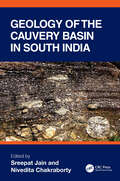
By Sreepat Jain, Nivedita Chakraborty. 2026
The Cauvery Basin is one of the most widely known and geologically important basins of India, and it has been…
for decades, and still is, the focus of study for both national and international researchers. This book is an up-to-date multidisciplinary collection of studies addressing various aspects of the Cauvery Basin from topics on stratigraphy, sedimentation, and climatic oscillations to structure, tectonics, and a hydrocarbon perspective, to paleoecology, paleobiogeography, and paleobiota. This comprehensive synthesis with recent studies and data will immensely help postgraduate students, researchers, and industry professionals interested in the geology of the Cauvery Basin.Features Offers a complete panorama of the geology of the Cauvery Basin, the first book of its kind. Provides a multidisciplinary approach to the Cretaceous–Paleogene geology of the Cauvery Basin. Emphasizes the structure, tectonics, and hydrocarbon perspective of the Cretaceous–Paleogene deposits of the Cauvery Basin. Includes comprehensive information on the stratigraphy, sedimentation history, and paleoclimatic conditions of the Cretaceous sequence of the Cauvery Basin. Introduces advanced knowledge of the paleobiogeography and biotic assemblage or flora and fauna of the Cretaceous–Paleogene succession of the Cauvery Basin. Is useful as a field guide with an up-to-date bibliography of the Cretaceous rocks of the Cauvery Basin. This book serves as an insightful reference for academics, undergraduate students, and research professionals involved in geology, earth sciences, and envrionmental sciences.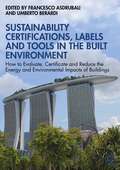
By Umberto Berardi, Francesco Asdrubali. 2026
This book is aimed at covering all aspects of the evaluation, certification, and reduction of the energy and carbon footprint…
of the built environment from the scale of the city and its neighbourhoods, to the building level and finally to the level of single building materials and components. Many protocols, tools, and labels have been proposed in recent years, both at international and local levels, and the aim of the book is to classify, describe, and discuss all the different approaches and options.The chapters offer a comprehensive, up-to-date, and critical review of all the different certification methods that have been proposed at different levels in the building sector. The first chapter introduces the topic and its importance, providing data on the impact of the building sector and the construction industry. The following chapters are dedicated respectively to tools and protocols for cities and neighbourhood sustainability assessment, tools and protocols for buildings sustainability assessment and certification, and for building materials and components. Finally, this book includes an overview of the legislation and standards in the field and case studies to exemplify the application of the different tools and labels.This is a key reference for decision-makers, researchers, scholars, students, and professionals approaching research and work in the field of energy and environmental impact of the building sector be they engineers, architects, planners, owners, developers, or facility managers.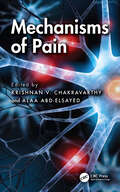
By Alaa Abd-Elsayed, Krishnan V. Chakravarthy. 2025
Pain is a serious health problem. This book presents an intensive review of the anatomy, physiology, and pharmacology of the…
systems that mediate nociceptive processing. The authors cover areas that include anatomy, central and peripheral nerve processing, tissue and nerve injury states, as well as preclinical and clinical models of pain. Mechanisms of Pain also covers important clinical concepts, with specific emphasis on mechanisms of action. Written by world renowned global faculty, this book covers important areas of science required to understand pain medicine. Important topics covered include post–tissue and nerve injury pain states of primary afferents and the spinal cord. The authors also cover mechanisms of action of clinically relevant analgesics (opiates and non-opiates), psychological aspects of pain, pathophysiology of migraines, as well as the genetics of pain. This comprehensive book is to guide undergraduate, graduate, and clinicians in the field of pain medicine on important concepts related to the science and practice of pain.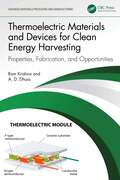
This book is designed to demonstrate the need for thermoelectric energy materials including non-conventional materials for heating and cooling applications…
in thermoelectric energy-efficient devices. In addition to the fundamentals, functionalities, and classifications associated with thermoelectric energy materials that can be used in industries, this book explores how these materials can contribute to high energy efficiency and sustainability, even though they are used in waste heat recovery systems. Climate change and global warming are also taken into consideration.Features: Exclusively focuses on non-conventional thermoelectric materials. Deals with key areas for new generation thermoelectric materials, such as nanostructured materials and non-traditional materials. Highlights the right thermoelectric material selection, their design, characterization, and testing. Covers additive manufacturing/3D printing for highly customized and efficient thermoelectric devices. Includes case studies based on real-world applications. This book is aimed at researchers and graduate students in materials science and clean technologies.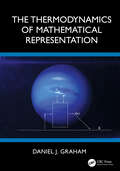
By Daniel J. Graham. 2025
Thermodynamics is the physical science surrounding work, heat, and relationships across fundamental quantities, and situates itself near the center of…
multiple disciplines through its generality and timelessness. Its laws required no rewriting after the twentieth century revolutions of quantum mechanics, relativity, and solid state physics, just to name three subjects. The nine chapters of this book make appeal to thermodynamic notions and laws to get under the hood of mathematics—the language of the physical sciences—without just echoing things best said and written in math books. It takes a system to learn about another system—we all need thermometers, voltmeters, and other gadgets to get to know objects of interest. But just as critical are the numbers and functions we put to the task, however relegated they are to computers in the modern day for the heavy lifting. To be sure, mathematical representations like x = ½, 5.2, π, e, etc., and f(x) = x2, sin(x), etc., are never in physical contact with the solids, liquids, and gases that draw our attention, but they are as impacted by the same natural laws as the lab apparatus itself.This book shows how the thermodynamic laws impact our number systems. The laws affirm that we have direct access to a vanishingly small fraction of the real numbers. They further establish that the real numbers present a maximum-evolved system impacting all matters of computation, graphing, differentiation, and integration. For completeness, one of the chapters includes cases where the thermodynamic laws have little, if anything, constructive to say about representations in mathematics.This book presents a novel perspective to students and teachers in the physical sciences, biology, and mathematics, with the goal of enriching classroom and seminar hours. The chapters are self-contained and written informally, and readers with rudimentary knowledge of energy, numbers, and functions should handle the material well.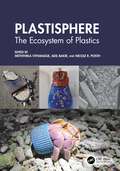
By Meththika Vithanage, Adil Bakir, Nicole R. Posth. 2025
The plastisphere provides a unique man-made habitat for organisms and microbial communities. Investigating the interactions and functions of these organisms…
helps us understand how fouling communities can settle on these novel platforms and be moved beyond their natural ranges as well as their contribution to nutrient cycling and biogeochemical processes. This book examines the plastisphere and reveals a secret world of microbes that have adapted to live on plastic surfaces. It explains the ecological effects of plastic pollution, human health concerns, microbial ecology, and mitigation techniques and advocates sustainable solutions. Readers will dive into this enthralling ecosystem rich with microscopic life and explore its mysteries in this thought-provoking book.Features: Presents recent insights into the fundamentals of the plastisphere, with a specific focus on environmental interactions Introduces the work of global experts and their ongoing studies, creative approaches, and new discoveries Highlights the macro and molecular interactions of environmental domains with the plastisphere Explores the notion of bioinvasion that can threaten the health and productivity of our ecosystems Includes detailed multidisciplinary data on the behavior of plastic materials and environmental microbiome Explains the main factors causing ecosystems to evolve and to live in human-made plastic environments Helps readers from various backgrounds to gain a thorough understanding of the topic of the plastisphere This book is an insightful reference for researchers, academics, students, and professionals in Environmental Science, Microbiology, Environmental Engineering, Oceanography, and Material Science.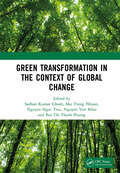
By Sadhan Kumar Ghosh, Mai Trong Nhuan, Nguyen Ngoc Truc, Nguyen Viet Khoi, Huong, Bui Thi Thanh. 2025
This book captures the proceedings of the International Conference on Green Transformation in the Context of Global Change (GREEN 2024),…
organized by the School of Interdisciplinary Sciences and Arts, Vietnam National University, Hanoi. Each of the eight sections in this volume offer an interdisciplinary forum to exchange valuable information and knowledge on green transformation.It emphasizes the need for new, flexible and creative solutions to tackle the enormous challenges of global change such as geopolitical conflicts, climate change, environmental degradation, biodiversity loss, clean water and food shortage, economic instability, poverty, and social inequality.It touches upon several crucial topics, including: Green transformation in the digital transformation context Emission reduction and energy transition Agro-ecology and sustainable food systems It will be a valuable read for researchers and practitioners of waste management, green manufacturing, sustainable development and climate change.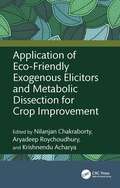
By Aryadeep Roychoudhury, Krishnendu Acharya, Nilanjan Chakraborty. 2026
Due to the alarming increase in human population and global food demand, farmers are looking for a better option that…
can provide them huge benefits within a short period of time. The use of chemical pesticides, fungicides, or other chemical fertilizers altogether causes a huge adverse impact on the environment. Using environmentally safe elicitor molecules can solve this problem in two ways. First, their application is a cost-effective process, which can provide maximum benefit to the farmers. Second, they are safe to apply directly to the environment.Key features of the book:1) It covers a vast area of research undertaken on elicitation processes.2) It comprises both biotic and abiotic stress tolerance through elicitation.3) It highlights a low-cost technology for adoption in future for larger benefits for a better future.4) Omics approaches are highlighted.5) The chapters are supported by sufficient illustrations.This book comprises aspects of elicitation or elicitor-mediated research undertaken so far, to provide a direction toward a chemical-hazard-free world without compromising the yield and market value of the plant-based products. This book aims to guide students at the undergraduate and postgraduate levels as well as researchers, academicians and other industry professionals.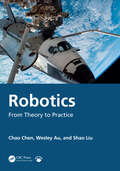
By Chao Chen, Wesley Au, Shao Liu. 2025
Robotics: From Theory to Practice introduces robotic theories and technologies to audiences, including university students, professionals with engineering backgrounds, and…
even high-school students interested in building their own robots. We aim to bridge the gap between classic theories and real-world applications of robotic manipulators, which, to date, have far exceeded the domain of conventional industry.The contents are divided into three parts. The first two cover classic theories of robotics, including kinematics, dynamics, path planning, control, and programming. Specifically, Part I is an introduction targeting junior students, featuring more simplistic topics and examples. Part II provides the senior students and professionals with more in-depth discussions on critical topics and more comprehensive examples. In Part III, we demonstrate how classic robotics theory can be extended to more advanced theoretical frameworks and adopted in real-world applications beyond conventional industries.This textbook is valuable to broad readers, including those who have limited background in general engineering and wish to explore non-conventional applications of robotic manipulators. The scaffolded contents from Part I to Part III are created to lower the prerequisites and smooth the learning curve.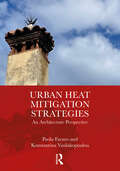
By Paola Favaro, Konstantina Vasilakopoulou. 2025
Urban Heat Mitigation Strategies: An Architecture Perspective explores heat mitigation strategies integrated into the urban architecture of global cities, aiming…
to enhance citizens’ quality of life through thoughtful design decisions blending architecture, science and engineering. The projects examined exemplify top-tier approaches in architecture, urban planning, landscape design and engineering across diverse city precincts worldwide. Inspired by architect and urban designer Lewis Mumford’s 1970s call for urban spaces that support citizens, these initiatives focus not just on aesthetics but also on effective social and climate change mitigation strategies.Featuring international urban projects recognised for both architectural significance and improved thermal comfort, this book examines the various heat mitigation strategies in major urban projects using architectural and engineering methodologies. Combining architectural formal/critical analysis with engineering performance modelling, the authors offer qualitative and quantitative assessments of each urban project. These projects showcase best practices utilising elements such as water, materials, vegetation and canopy to mitigate heat and promote civic life. Originally intended for aesthetics and social functionality, these strategies now serve as benchmarks for creating thermally comfortable public spaces globally.Relevant to architects, city planners, landscape designers and engineers, Urban Heat Mitigation Strategies: An Architecture Perspective promotes successful collaboration among built environment professionals to address climate concerns and create liveable, comfortable urban spaces.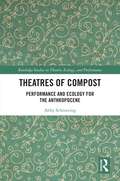
Theatres of Compost places ecology at the center of performance scholarship and criticism, and it positions performance as a key…
cultural process for bringing about a more just and sustainable future.Examining a unique archive of agricultural performances—plays, theatre collectives, and activist rituals that engage questions of how humans use the land and produce food—this book lays out a framework for how theatre and performance contribute to a cultural shift toward ecological awareness. Theatre of compost is performance that directly engages ideologies of exploitation, mass production, and accumulation. Instead of discarding the forms, themes, methodologies, and histories that have perpetuated ecological destruction, the case studies in this book show that what has come before can be composted: broken down and reconstituted as the fertile foundation for a more livable life in the Anthropocene. Theatres of Compost will appeal to the new but quickly growing subfield of performance and ecology. As the climate and ecological crises worsen, more scholars and students in theatre and performance will be searching for ways to make their work meaningful and relevant.This book will be a helpful resource for graduate-level courses in performance studies, performance and ecology, and the environmental humanities.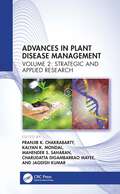
By Pranjib K. Chakrabarty, Kalyan K. Mondal, Mahender S. Saharan, Charudatta Digambarrao Mayee, Jagdish Kumar. 2025
Advances in Plant Disease Management: Volume II: Strategic and Applied Research is an invaluable compilation for researchers/students/stakeholders/policymakers in agriculture. This…
book aims to offer the latest understanding of how fundamental and basic research can be translated toward the engineering of biotic stress-resilient crops through applied and strategic management of plant diseases. Volume I clearly explained the updated knowledge on basic and applied phenomena of pathogen’s interplay with the host, the host immune system, crosstalks among downstream regulating molecules as unraveled through genomics, proteomics, metabolomics, bioinformatics, and molecular studies. This volume of the book equips readers with the knowledge and understanding to confidently employ this basic information in the formulation of management strategies for major crop plant diseases.This book offers comprehensive coverage of the research advances in plant disease management, including: Newer insight into pest risk analysis (PRA) and its significance in international trade. Developments in eco-friendly green technologies that are safe for both humans and the environment to manage diseases. Use of AI tools for diagnosis, development of models for advanced prediction of the outbreak of epidemics, and need-based application of agrochemicals and their appropriate formulations for use through drones. The information regulation and use of biostimulants for biotic and abiotic resilience. Plant protection policies that support the agricultural production system from a global perspective.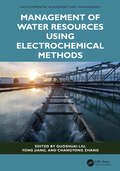
By Yong Jiang, Guoshuai Liu, Changyong Zhang. 2025
This book encompasses various approaches to electrochemical water treatment, emphasizing a well-structured framework within the nexus of electrochemistry, water, and…
energy. It addresses the urgent challenges of water scarcity and pollution and offers practical insights and operational guidance on removing pollutants and preserving water resources through water purification. Applications and real-life case studies support the innovative nature of electrochemical processes as a sustainable and efficient alternative. The user-friendly approach makes this book accessible to a broad audience, being a specialist seeking advanced techniques or a concerned citizen.Features Covers comprehensively the most recent and advanced electrochemical water treatment techniques. Presents practical operational guidelines and insights. Includes real-world examples and case studies. Focuses on environmental impacts and sustainability. Addresses innovative approaches in technology, theoretical computational analysis, and future development guidance for electrochemical water treatment. This book is for professionals, students, and researchers in water and environmental sciences interested in water treatment, management, and resource recovery. It is also a great resource for public and environmental health experts and readers who work in related disciplines and readers interested in water management, treatment, and the health of the environment.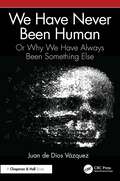
By Juan de Dios Vázquez. 2025
We Have Never Been Human: Or Why We Have Always Been Something Else boldly reimagines what it means to be…
human, challenging the traditional notions that bind our identity to biology and culture. From ancient mythologies to modern technologies, this book reveals a dynamic, ever-evolving human identity shaped by external forces and technological advancements.Blending insights from philosophy, technology studies, anthropology, and cultural critique, We Have Never Been Human: Or Why We Have Been Something Else offers an interdisciplinary exploration of our constructed identities and what they portend for the future of society. It raises essential questions: How has technology reshaped our self-perception? Are humans fixed beings, or are we endlessly evolving? What ethical, social, and political challenges arise as we integrate with intelligent machines?This book is a compelling read for those intrigued by the intersection of humanity and technology, offering profound insights into the essence of what it means to be human—or perhaps, what it means to evolve beyond the human.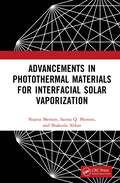
By Najma Memon, Saima Q. Memon, Shakeela Abbas. 2025
This monograph aims to examine different types of photothermal materials, such as metallic, organic, and composites, that have been reported…
to generate localized heat at the air–water interface, leading to vapor production on the surface. It focusses on various factors, including photothermal efficiency, evaporation rate, and others, which influence vapor generation. By drawing useful conclusions, this book contributes to the development of cutting-edge interfacial solar vaporization systems for practical applications.Features: Presents exclusive material on interfacial solar evaporators and photothermal materials. Discusses effective photothermal material selection. Helps calculate commercial material usage expenses in the field of photothermal-based evaporation systems. Examines different types of photothermal materials, such as metallic, organic, and composites. Explores photothermal efficiency and evaporation. This book is intended for graduate students and researchers in energy, chemical engineering, and materials science.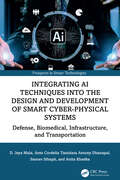
By D. Jeya Mala, Anto Cordelia Dhanapal, Saurav Sthapit, Anita Khadka. 2025
Building on the knowledge of risks, vulnerabilities, and safety measures associated with cyber-physical systems, this book focuses on adapting artificial…
intelligence (AI) techniques to smart cyber-physical systems application development. The future is going to see cyber-physical systems in almost every aspect of life, so a book that focuses on shedding light on the design, development, and security aspects of cyber-physical systems in more crucial domains such as defense, healthcare, biomedical, smart city applications, is needed.Integrating AI Techniques into the Design and Development of Smart Cyber-Physical Systems: Defense, Biomedical, Infrastructure, and Transportation offers an introductory exploration of the fundamental theories and concepts of AI and machine learning (ML) that are utilized in the building of dependable cyber-physical systems. It brings the ideas of advanced design and development and empowered security measures to cyber-physical systems. By focusing on the application of AI in cyber-physical systems design as well as security aspects, an improvement in reliability and advancements can be explored. Also included are the latest findings and advancements as well as case studies and illustrative examples on the design and development of smart cyber-physical systems.This resource is highly valuable for those employed in educational institutions, research laboratories, enterprises, and government agencies, as well as for students seeking novel ideas in the realm of smart cyber-physical systems design.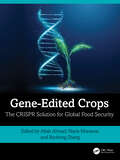
By Aftab Ahmad. 2025
CRISPR-based genome editing has revolutionized the precise genetic improvement of agriculturally important crops, offering unprecedented precision and efficiency in crop…
improvement. This powerful technology holds immense potential to reshape the future of food security, enabling scientists and agriculturalists to develop resilient, high yield crops resistant to diseases, pests, and environmental stresses. Gene-Edited Crops: The CRISPR Solution for Global Food Security offers a comprehensive guide to the latest research, advancements, and real-world applications of CRISPR in crop genetic improvement for sustainable agriculture and food security.Through in-depth chapters, this book provides an accessible yet rigorous exploration of CRISPR technology, CRISPR reagents and their potential delivery methods, recent developments in CRISPR, and its transformative role in agriculture and food security. With a focus on practical implementation and future potential, this book examines the science behind genome editing and the strategic pathways to address key challenges in crop development—from enhancing nutritional profiles to improving environmental adaptability.Features include: Comprehensive overview: An introduction to the fundamentals of CRISPR technology and its application in crop science. Computational tools and CRISPR reagents: Bioinformatic tools for designing precise gRNA, CRISPR reagents and their effective delivery methods. Recent developments in CRISPR: Emerging developments in CRISPR for precise gene editing in plants such as base editing, prime editing, Fanzor, and multiplex gene editing. Real-world applications: Application of CRISPR for developing future crops, including projects targeting enhanced disease resistance, drought tolerance, and improved nutritional content. Regulatory landscape: Insightful discussion on the evolving global regulatory framework governing gene-edited crops, including the transformative role of artificial intelligence in navigating these regulations. Future directions: Exploration of ongoing advances and the outlook for CRISPR technology in addressing food security. With detailed examples, data, and resources, this book serves as an essential reference for scientists, agriculturalists, and policymakers invested in the future of food security. It also doubles as an educational resource for advanced courses in genetics, plant sciences, and agricultural biotechnology, making it invaluable to both seasoned researchers and those newly interested in the potential of CRISPR.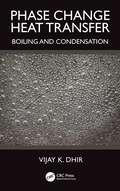
By Vijay K. Dhir. 2025
Phase Change Heat Transfer covers theory and experiments in heat transfer associated with boiling and condensation. It presents the basics…
of solid–liquid–vapor phase interactions and methods to measure surface wettability and interfacial tension between liquid and vapor.Exploring the mechanistic details of pool boiling heat transfer, this book gives correlations for the prediction of nucleate boiling, critical heat flux, and post-critical heat flux. It describes and analyzes homogeneous nucleation and heterogeneous nucleation. This book also discusses both film and dropwise condensation including integral and differential solutions for laminar film condensation. The book also includes flow boiling and numerical simulations of pool boiling. This book is intended for upper-level undergraduate mechanical, aerospace, nuclear, and chemical engineering students taking courses in Phase Change Heat Transfer, Boiling and Condensation, Nuclear Thermal Hydraulics, and Advanced Heat and Mass Transfer.Instructors will be able to utilize a Solutions Manual and Figure Slides for their course.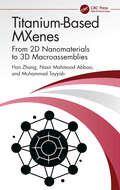
By Muhammad Tayyab, Han Zhang, Nasir Mahmood Abbasi. 2025
This book explores titanium-based MXenes, an emergent class of materials with a broad range of properties and potential applications. It…
introduces 3D MXene assemblies and compares their properties with such other well-known two-dimensional materials as graphene and transition metal dichalcogenides.Features:• Focuses on emerging 2D titanium-based MXene (Ti3C2Tx and Ti2CTx) materials.• Offers detailed synthetic strategies and scalable approaches.• Covers defect engineering and physical properties.• Compares the uniqueness of 2D titanium-based MXene with other 2D-layered materials.• Discusses 3D macrostructure of titanium-based MXenes and their practical application in photodetectors, catalysis energy storage devices, and biomedicines.The first comprehensive book on the subject, this work is aimed at researchers in materials and electrical engineering and related disciplines.